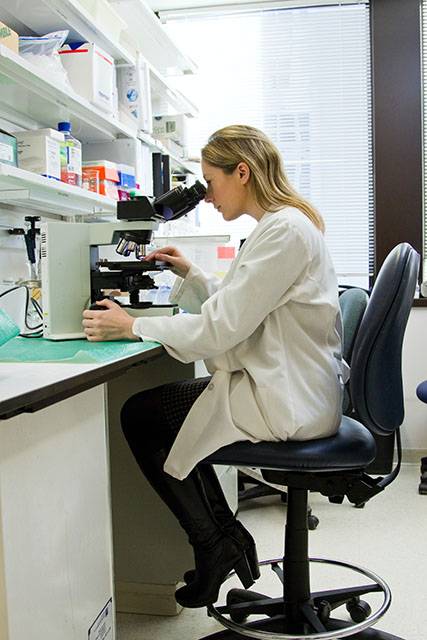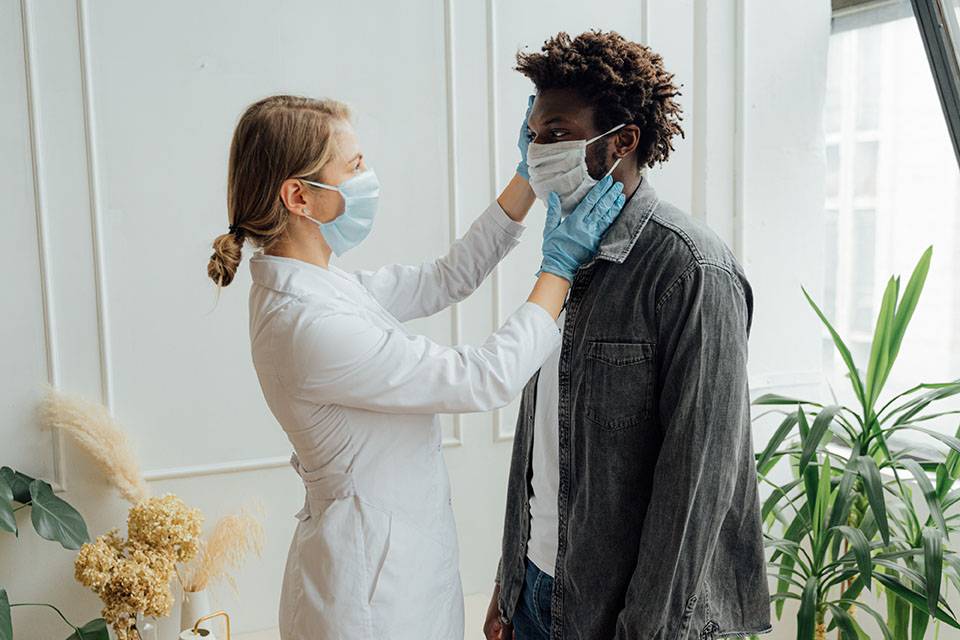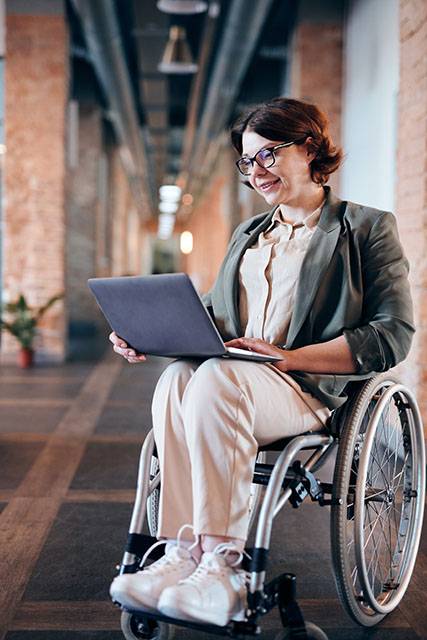Getting dressed in the morning is a task we do daily, some more consciously than others. We get dressed for work in the morning, choose casual clothes for lunch with a friend, or maybe dress up for dinner in the evening. And with each outfit we — intentionally or unintentionally — communicate non-verbally to the outside world.
It is no question that what we wear is who we are because fashion is a way for us to express ourselves, our identity, and even how we feel. The clothes we wear daily reflect the way we want others to perceive us and how we see ourselves.
Clothes even influence our cognitive abilities.

For example, a lab coat is associated with intelligence and scientific thinking.
When a person wears a lab coat, these characteristics symbolized by the coat seem to have positive effects on their performance of specific tasks, according to the researchers. The study results show that what we wear, and the symbolic meaning we associate with specific fashion items has measurable effects on our mental state.
Can medicine and fashion intersect in some way?
A thought that occurred sitting on a bench, a few days back, outside an ICU of a hospital.
No doctor has ever prescribed a shirt to save a patient’s life. But what if my tee-shirt bore the phrase: “In Need of Kidney, O Positive.” Or “Need of Plasma, B Positive”. This will surely catch some donor's attention and the patient may undergo successful surgery to implant a kidney donated by a stranger. Although this thought may sound strange but can medicine and fashion intersect in other ways?
Have you ever thought of the effect of hospital gowns on patients? I am sure, if studied, it should come as no surprise that many patients will report feeling a loss of privacy, individuality, and autonomy when putting on a gown.
Furthermore, the hospital gown will prompt patients to internalize the idea that they were unwell. It may have a psychological impact thinking that the matter is serious, I am ill.
The gown needs to be redesigned. But the problem is not easy perhaps because the gowns must be cheap, easy to manufacture, and easily washable. However, even if they are only available to people who will be spending considerable time in the hospital, gowns in different sizes and colors might help give these patients a feeling of control and agency—especially when so much is out of their control.
In fact, creative solutions to patient's gowns may have some positive effects clinically.
What if a young patient is given an “MRI – I am a Hero” kit to explain the procedure and make the experience feel like part of a superhero adventure? Among other activities, patients could choose shorts and a T-shirt with superhero emblems to wear inside the machine.
The association of garments with illness could be one of the reasons why in our country only a few people wore face masks before the pandemic to protect themselves from respiratory illnesses such as H1N1 influenza etc.

Just as a patient gown has been associated with being ill, wearing a face mask in public was associated with being diseased and even dangerous.
Today, by contrast, they are increasingly seen as a fashion accessory. While this might seem like an attempt by retailers to profit from the Covid crises, there are potential benefits to this perspective.
Fashionizing masks is a good way to normalize them and to say that you do not need to be scared. I remember reading some news about how young Korean pop singers made the wearing of face masks fashionable, which might help explain why the incidence of COVID-19 has been so low in South Korea.

Fashion should also address the needs of the differently-abled in the form of “adaptive fashion”, designed to allow a person to easily dress him/herself stylishly.
The beauty of adaptive fashion should not only lie in its functionality but also in the effect it can have on the wearer’s self-esteem.
All of us have seen how the lack of appropriate clothing has discouraged people with mobility impairments from going to functions/events.
Designers may build in features like a one-handed zipper, magnetic buttons for people who have dexterity impairments, tagless and flat seams for people who have sensory sensitivity; and pants with higher backs and easy closures for people who use wheelchairs (try putting on or taking off a pair of jeans while sitting and you’ll realize how difficult this is).
There can be no question that aesthetically pleasing design is an integral part of success in the fashion industry.
In the traditional fashion design process, the designer knows best, and users’ or consumers’ needs and desires are not considered worthy of serious investigation, as target market segments are predetermined.
However, fashion designers and educators who are engaging in innovative functional design thinking practices are likely to experience a more inclusive relationship with consumers. This provides opportunities to broaden the scope of wearer groups beyond those that they may interact with as part of the traditional fashion design system and to produce apparel and other wearables that meet the functional, expressive, and aesthetic needs of consumers.
The mainstream fashion industry could learn much from such user-centered design approaches in the light of its expressed desire to act more inclusively and ethically.
RELATED TOPICS:#Apparel,Sanjay Lal
Leave a comment
Our email address will not be published. Required fields are marked *







9 Comments
Maj Gen Ranvir YadavMay 12, 2021 at 19:43 pm
Very interesting article..Explores a totally new field..Author has made some very practical n earth breaking ideas..Specially about hospitals.. Functional fashion is more useful than just flowing a diffrent trend every season..There is a need to audit the carbon footprint.
Hitesh JainMay 10, 2021 at 12:09 pm
Well said , The true representation of the word - " The Fabric of Society and times " . as we all evolve our fabric should also align and evolve with times and need of the hour ( Adaptive ) . Historically also - We see dressing and looks were aligned to the purpose and need - Our sikh Warriors is an example .
Pradumna KanodiaMay 08, 2021 at 13:23 pm
Fashion has a new meaning - the way the world is evolving and how everything else is trying the catchup....
Deepak PunshiMay 08, 2021 at 10:42 am
Excellent suggestions Sanjay....seems you got ur inspiration sitting on the bench outside the hospital.....surely ur ideas will be picked up by some designers garment companies!! Keep ur posts coming!
RekhaMay 08, 2021 at 09:40 am
Well written article with a new perspective on fashion for hitherto un explored areas of fashion Yes it definitely needs to adapt itself to changing situations Masks in Korea is a good point to note !!
Art soodMay 07, 2021 at 22:09 pm
Very interesting read..throwing light on d connect between fashion and medicine..I personally believe in " adaptive " fashion.It is a universal fact that d first impression made by you is with ur clothes..When u r in a happy frame of mind u dress up with enthusiasm..not necessarily something fashionable..but something which makes u feel good..Definitely fashion and emotional well being is interrelated...rest each to their own..However d article is definitely worth pondering over...
Rahul MathurMay 07, 2021 at 21:14 pm
Fashionably factual article. Like the psychology of medical gowns ! & agree that hispital garment needs to be more fashionable! In todays, times fashionable masks are as important ! ..... there were times when it used to look odd when a group of Japanese or Koreans would be seen with masks in the markets of Delhi some 5-10 years ago & today, it’s the need of the hour. Similarly, Jain’s & Muslims’s have had covering up their faces religiously correct. Today, we all have to cover our faces & it has become relevant to add fashion to all of these. The day should not be far when most of the lab’s & hospitals would start consulting fashion designer's to up the working environment at the medical facilities ! Times are fashionably changing !
Meena AyriMay 07, 2021 at 20:22 pm
Wow ,what a thought.Certainly agree that a suitably designed dress can bring revolution in medical community.A comfortable dress can bring in happiness n positivity in otherwise feeling low patient.I feel this should be explored.
Sachin GargMay 07, 2021 at 19:51 pm
Good Insight on Fashion and medical connections. Even today it's futuristic thought yet a commendable thinking over such topic in such time. Great ??